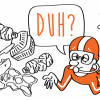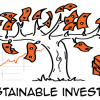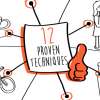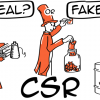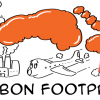Transcript
5 amazing biomimicry examples providing real sustainability solutions (for architecture, building & energy)
Hi folks, Alex here. If we break down our CO2 emissions worldwide, it is clear that buildings and energy are two sectors where we need to do better. Nature has been doing research and development for 3.8 billion years so let’s look at 5 ways nature can help us: we are going to talk about schools of fish, bees, termites, jackrabbits, coral and more. The music for this video is also inspired by nature, I will tell you more about it at the end. Ok, let’s get drawing.
If you are new here, this is the channel where we share tools for YOU to change the world. I started the video talking about CO2 emissions as being a negative thing, well, they don’t have to be. Nature does not see carbon as a problem; it sees it as a building block. Nature uses CO2 as a raw material to build things such as trees, leaves, algae, shells, etc. Coral reefs are also made of carbon. More precisely coral’s hard exoskeleton is made of calcium carbonate: corals combine CO2 and minerals in the sea water to make it. A few years ago, a researcher took this recipe to turn CO2 and sea water into calcium carbonate which is then used to make concrete. While a ton of traditional cement produces about 1 ton of CO2, a ton of a cement produced with this method sequesters half a ton of CO2. And it takes less energy to make as well. How come they never told me THAT in civil engineering school?
Now what do we do with this cool cement? We can make buildings. But even after construction, buildings tend to produce a lot of CO2. Remember our graph from the beginning: 25% of the total CO2 emissions worldwide are attributed to heat and energy and residential and commercial buildings are responsible for about half this 25%. Traditional heating, ventilation, and cooling (also known as HVAC) systems can be very wasteful and burn a lot of fossil fuels. With nearly 60% of a building’s energy consumption allocated to heating and cooling, we definitely need to do better on this. How does nature do it? As it turns out, termites also need to ventilate and control the temperature inside their mound but they don’t use fossil fuels. Inspired by the termites mounds, architect Mick Pearce designed Eastgate, the largest commercial building in Zimbabwe this way:
- like a mound, the Eastgate building uses thermal mass to store the heat during the day and releases it during the night. The building also has many chimneys and air channels to allow the building to breathe. During the night, the cool air from outside cools down the core of the building. During the day, the large central chimney creates a closed convection cycle sending the hot air up and out of the building constantly cooling the core;
- the large amount of surface area around the building helps dissipate the heat during the day while increasing heat loss during the night (like the large ears of jackrabbits and elephants help them regulate their body temperature);
- as a result, this building uses 35% less energy than other buildings in the same city. Some of Mick Pearce’s other buildings in Melbourne use up to 70-80% less energy than other buildings in the city.
This was an example of HVAC for a tall structure but some ant-hills can achieve a similar result underground. When a breeze blows on top of the hill, it draws the air out of the hill and fresh air comes in through the channels built on the outside. This is a well-known fluid mechanics phenomenon called the Coandă effect.
Another way in which HVAC systems can waste energy occurs when parts of equipment in the system operate in isolation without communicating with each other. As a result various parts can operate simultaneously and spend energy unnecessarily. Well, bees don’t do that. They coordinate individual behaviour to better serve the collective. Using the swarm intelligence of bees, the company Encycle offers a service called Swarm Logic® that connects the appliances together as a way to spread out energy demand among them reducing peek demand by 25% and unnecessary energy consumption by up to 30%.
Now that we know how to heat and cool our building, we still need electricity for lights and machines, right?! Well, schools of fish can help. Caltech researcher John Dabiri noticed that schooling fish can swim together without interfering with one another. Each fish creates many small vortices behind them as they swim. Using this idea, he created vertical axis wind turbines that can work well together in close proximity while traditional ones interfere with one another. Dabiri’s wind turbines actually feed off one another increasing their efficiency and making the most of the area available. With optimal positioning, a vertical axis wind farm could produce 10 times the amount of wind energy generated by a common horizontal turbine wind farm.
For renewable energy in urban areas, this wind tree is visually inspired by nature. 26-feet high and quiet, 1 tree can power a 4-person home, or 15 LED street lights or a 1000 sq.ft. of low consumption office space or 16,000 km of an electric car.
There are solutions all around us. Sometimes, we just need to change the way we think about things. If you have other cool biomimicry examples that directly contribute to sustainability, please let me know in the comments below.
The music in this video was created by Verdée, a French musician and singer who uses nature to create her music. Huge thanks to her! I am so excited and grateful that she offered to share her music in this video.
If you found this video useful, please share it and subscribe to the channel for more. If you want to help this channel grow, you can make on Patreon a pledge of $1 or more that will apply to the new videos I will post in the future. Thank you to all the patrons who make these videos possible and thank you for watching.

